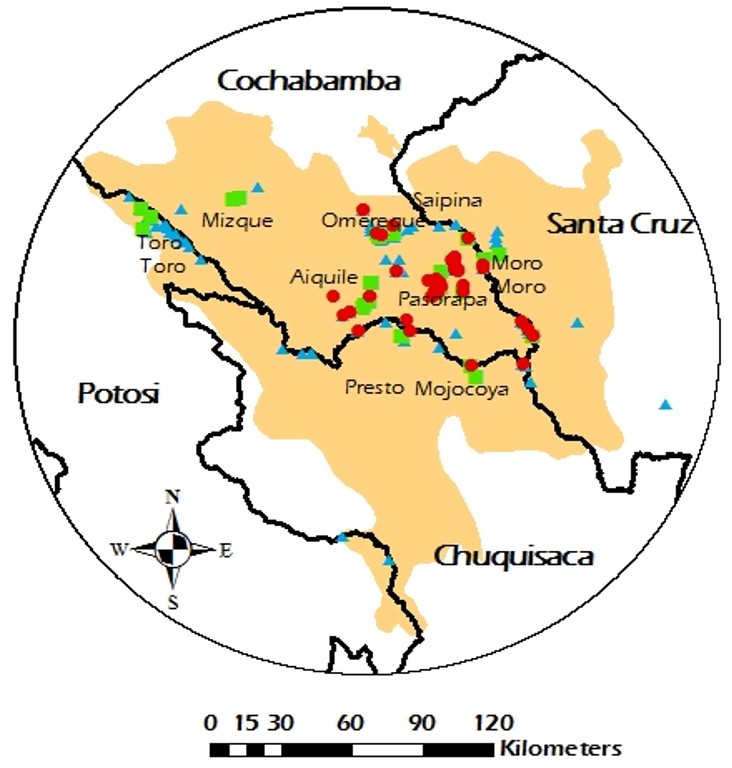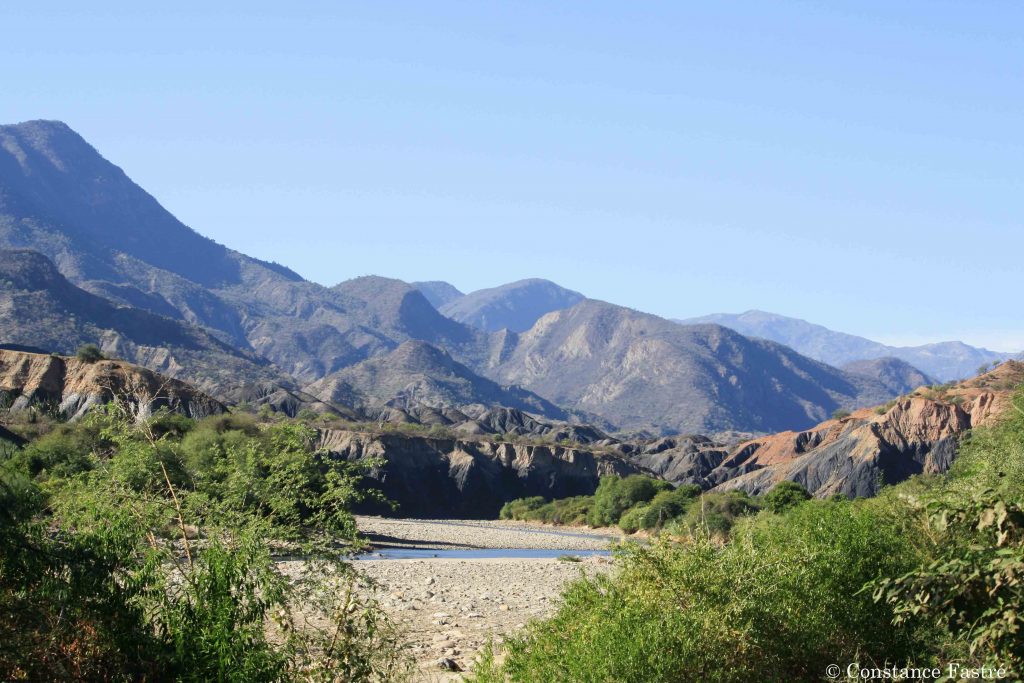In 2011, I took part in an expedition to record the presence of the Red-Fronted Macaws (Ara rubrogenys) in the Andean dry valleys of Bolivia for my master thesis. I consider this trip as the starting point of my passion for birds and of my career as a conservation biologist. Despite having to get up at dawn, spend days without a proper bed, a shower or a toilet, eat the local food hoping not to get sick (but sometimes get sick) and be away from the people I loved for so many weeks, it was a wonderful experience. Few people have traveled to these remote places and seen Red-Fronted Macaws, but I was lucky enough to spend two months (July and August) traveling the Andes to count them with a team of scientists from the University San Simon of Cochabamba.
Traveling the Andean valleys means delving deep into the Bolivian culture and nature. These regions are very poor and sparsely populated. The landscape consists of high cliffs, river valleys, forests, rocky outcrops and cacti. A golden, warm and extremely dry atmosphere reigns in the summer months and life is tough for people and animals alike when water is scarce. It is a land where wilderness still has meaning as you are reminded by the numerous vultures roaming the sky.
The Red-Fronted Macaw or Paraba Frente Roja as it is called in Bolivia, is a fascinating but understudied species. The macaws are endemic to the Andes of Bolivia and are threatened with extinction. Before recently, it was believed that only a few hundreds of them remained in their native valleys. In reality, there may be more of them, but because of a combination of habitat loss, persecution and the capture of individuals for the pet trade, the future of the species looks grim indeed. The goal of my project was to locate as many birds as possible in order to map their current distribution, and help conserve the species.
Our search started in the remote village of Molle Pampa. Lost in the Andes, almost an entire day drive from Cochabamba, the scenery is breath taking. When you are in the Andes, mountains are everywhere. Between the tufts of clouds and the high plains of the altiplano, peaks appear in the distance. It is wild and powerful. At night, the glow of the myriad of stars is unspoiled by artificial light and at dawn, seeing the sun rising over the rugged landscape is a glorious experience. When you sit or lie down, day or night, look around or above you, the beauty of the landscape fills your heart and soul and leaves you feeling whole. It is an incredible place.
We soon found our first macaws and I instantly fell in love with the birds: their striking colours (red, orange, blue, yellow on bright green) make them look like flying rainbows. Macaws are also adorable: they find a partner for life and do everything together. You can see them perched together, preening and calling each other. They look like they are cuddling each other while having an interesting (but very loud and raucous) conversation.
Red-Fronted Macaws, as all other parrot species, are extremely social. Small family groups gather to forage and roost. Groups can be quite large and it is impressive to see (and hear) a hundred birds perched in the trees, eating seeds and calling loudly. We found some of the largest groups near Molle Pampa, the town of Pasorapa, Omereque and Mizque.
Unfortunately, a group of macaws landing in a maize or peanut field can cause extensive damage and bring on themselves the wrath of the farmers. These regions of Bolivia being very poor, locals have little other choice than shooting birds raiding their crops and many inhabitants need the extra income made by selling young birds to the pet trade.
To tackle these problems, the Bird Conservation Association Armonía has launched several campaigns to raise awareness in local communities on the conservation value of the Red-Fronted Macaws. The creation of a community-run nature reserve to protect one of the most important breeding site for macaws (consisting of up to 50 cliff holes where the birds nest) is an important step to protect these amazing birds, which cannot be found anywhere else in the world.
If you want to see Red-Fronted Macaws in the wild, you will need private transportation and guiding. The Reserve created by Armonía, mentioned above (see information), is the best place to find the birds and support local communities. Another option is to head to Torotoro National Park, where you can also find amazing hiking trails, caves and dinosaur prints. Local guides are the best way to visit the park, and they will take you to places where you have a good chance to see the birds – if you specifically mention it and if you are ready to get up very early. The advantage of the latter option is an easier access from Cochabamba, where touristic and local buses will take you straight to the park in a few hours of driving windy mountain roads.
You can find more information on Red-Fronted Macaws on the website of Armonía, but if you want to help protecting the species (and any other species of parrot of macaw), the best way to do so is to never buy one of them as a pet. Parrots belong in the wild, where their dazzling plumages can enlighten the skies and where they are free to be together.























